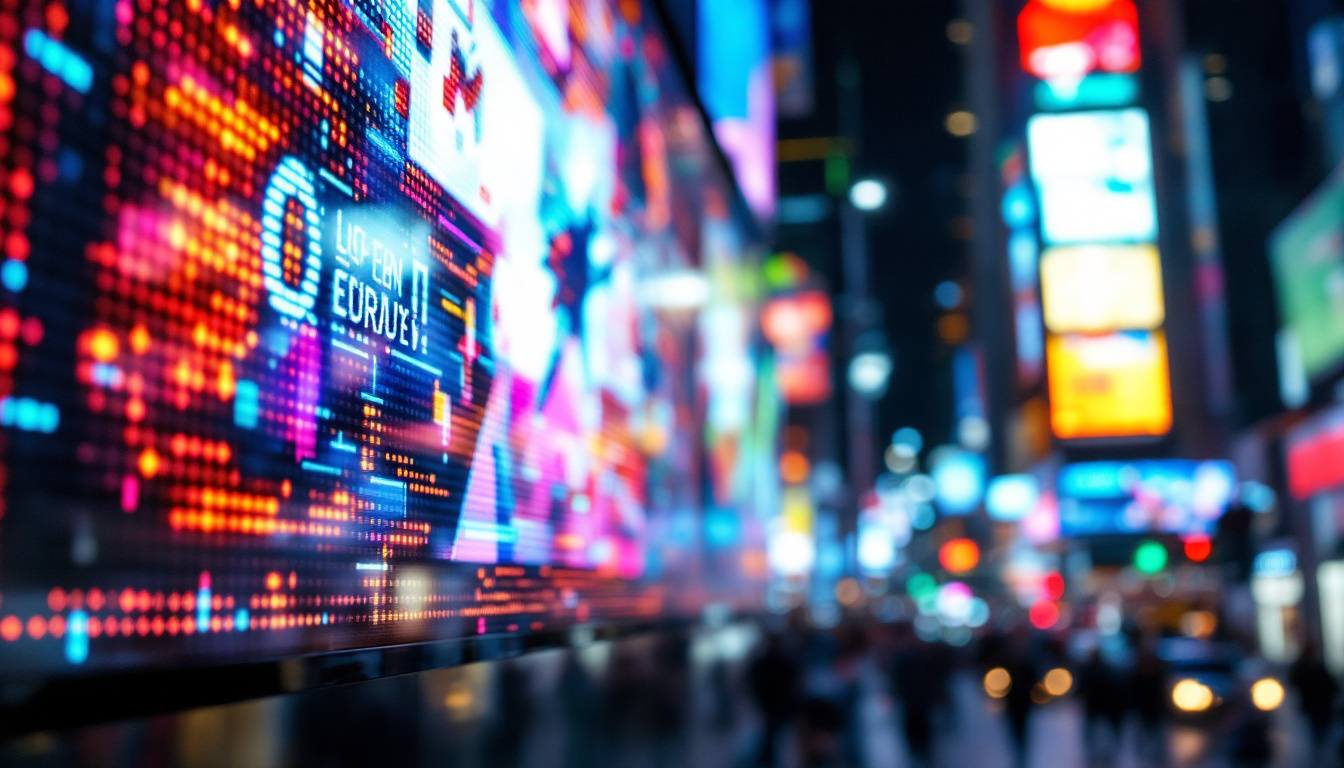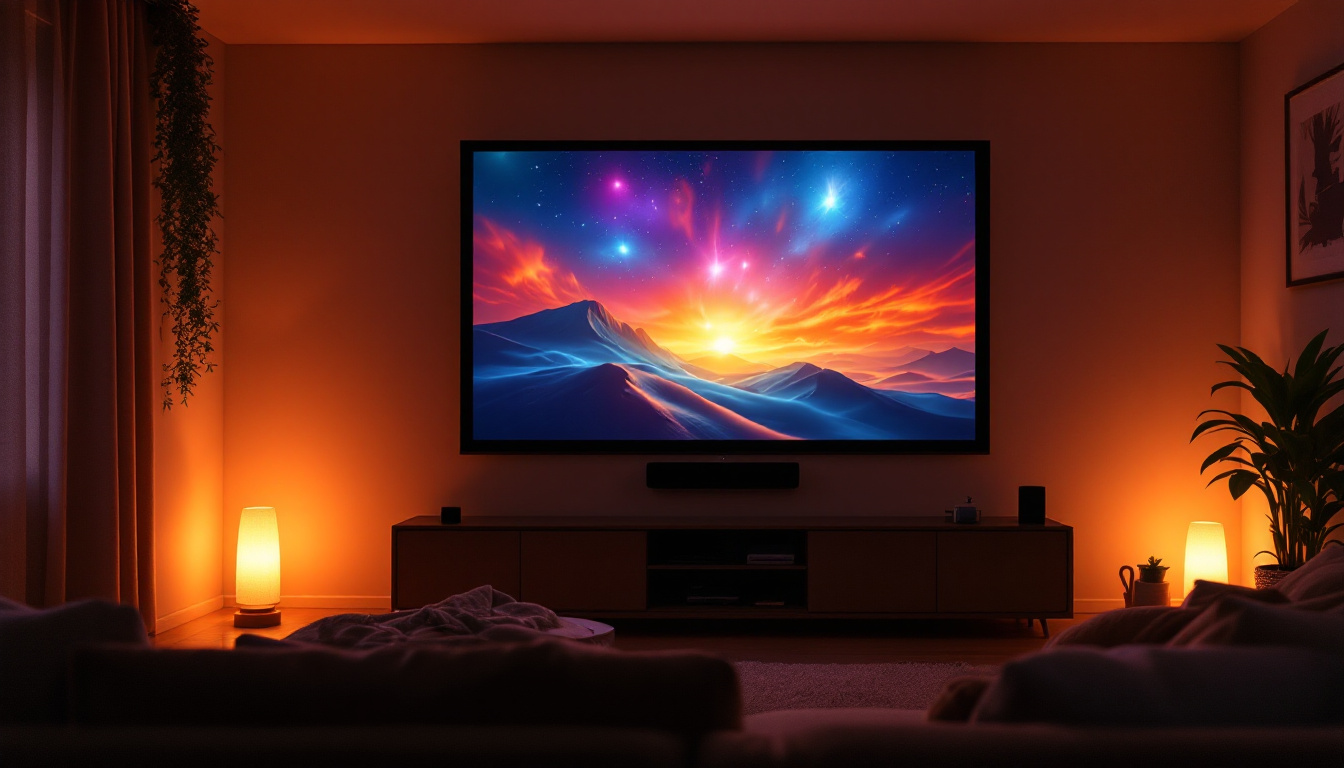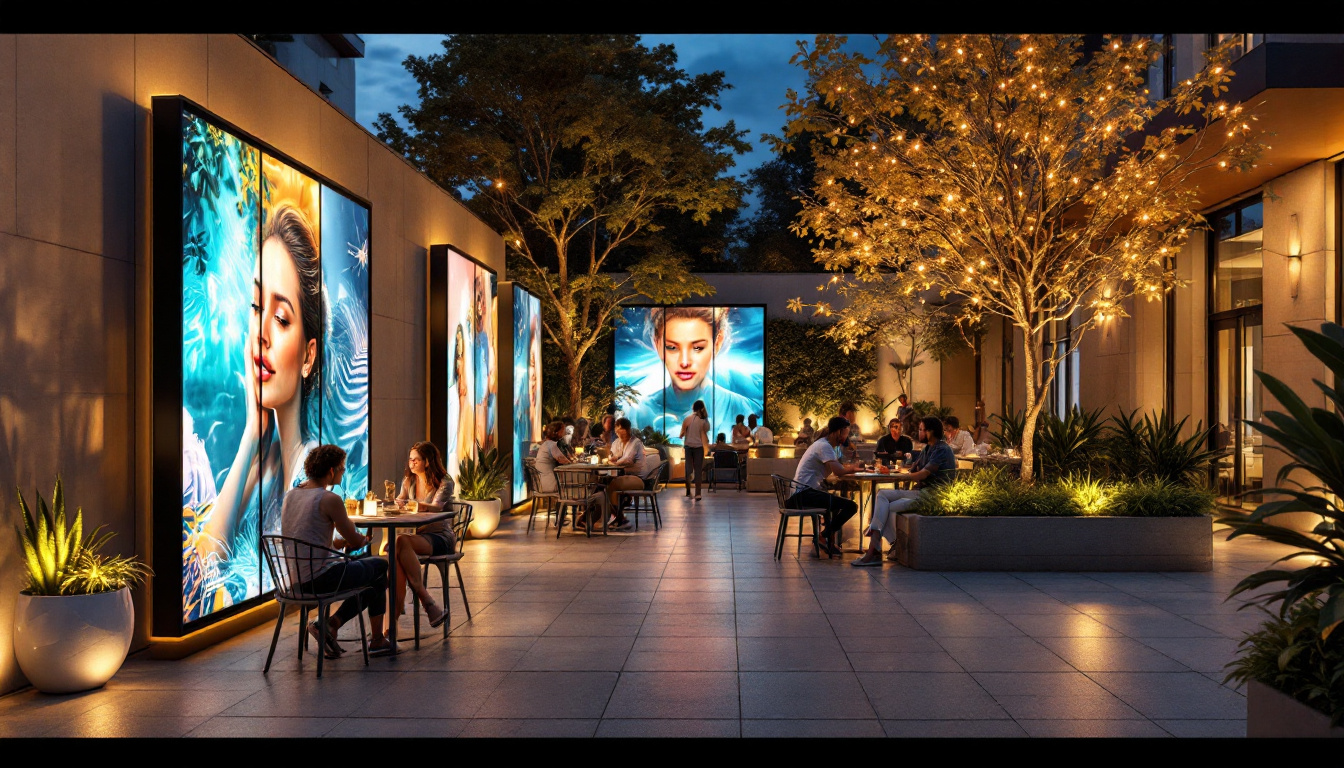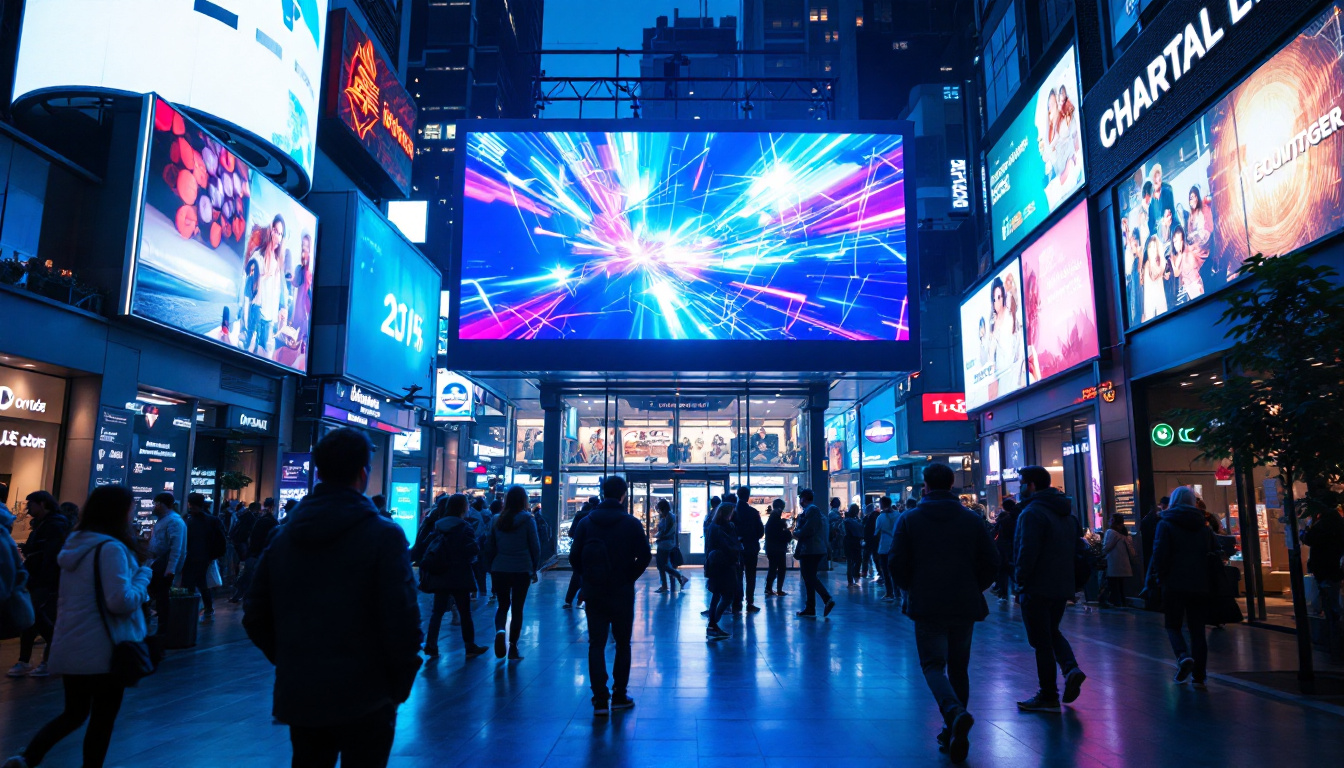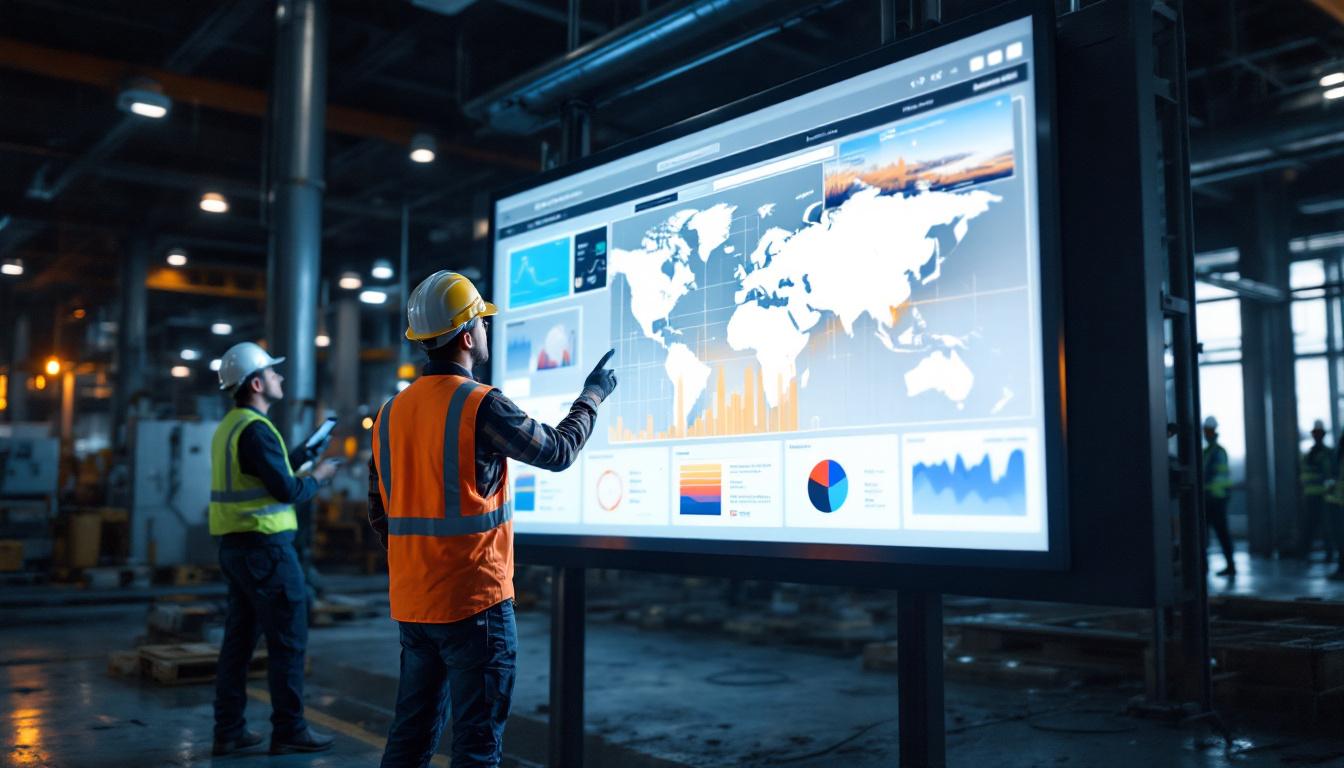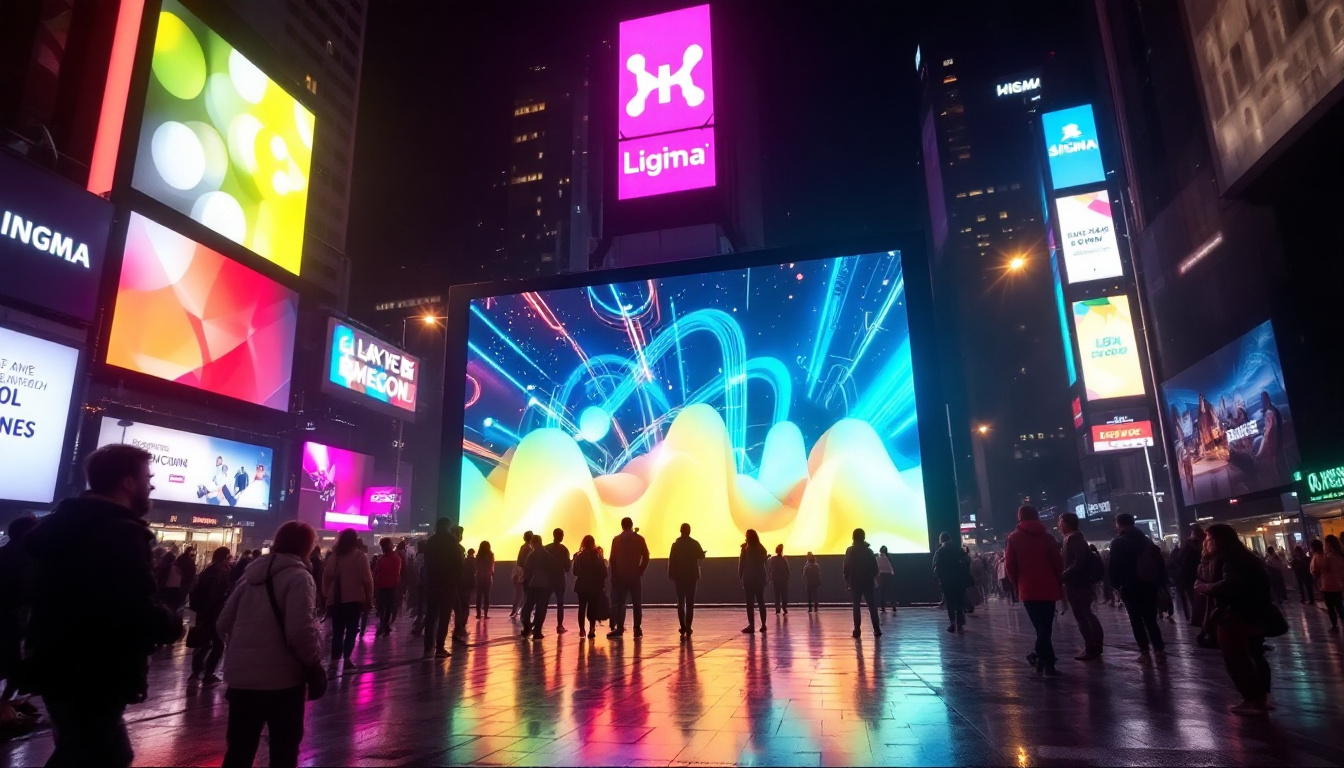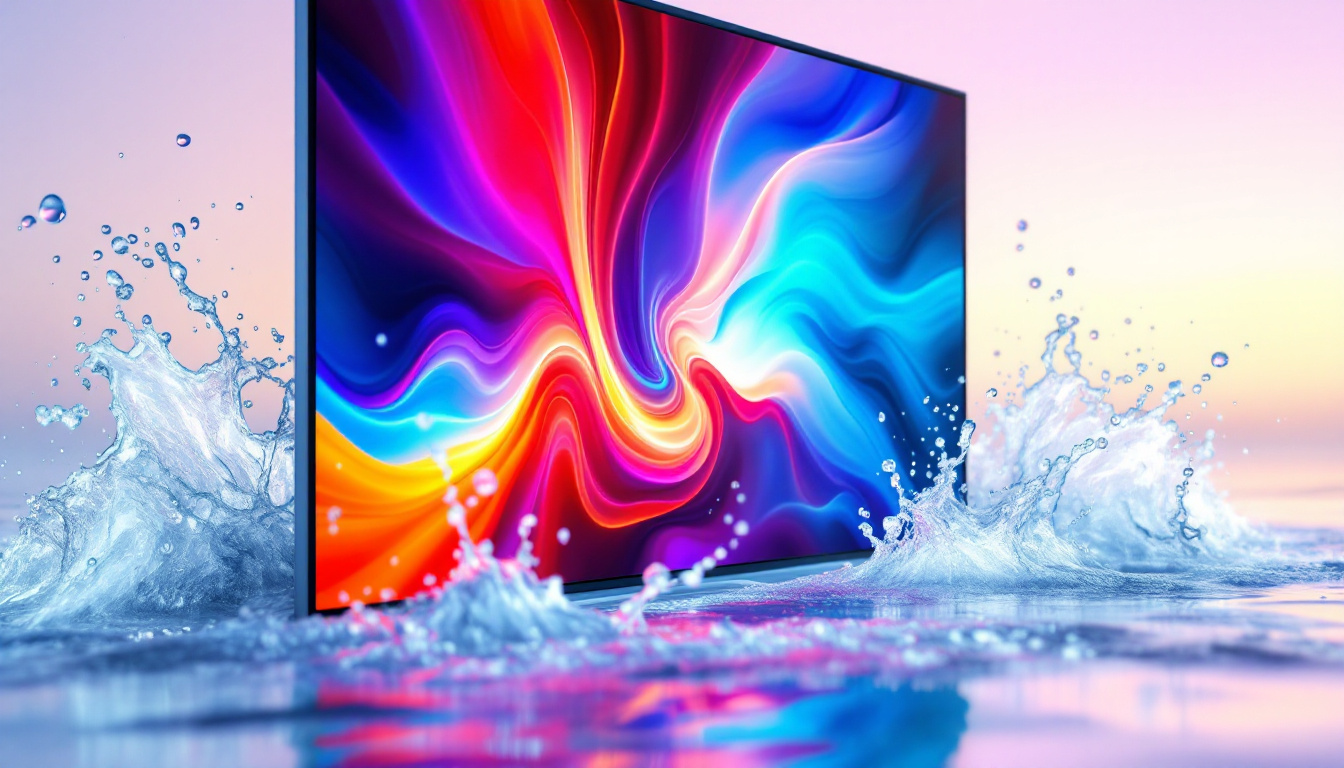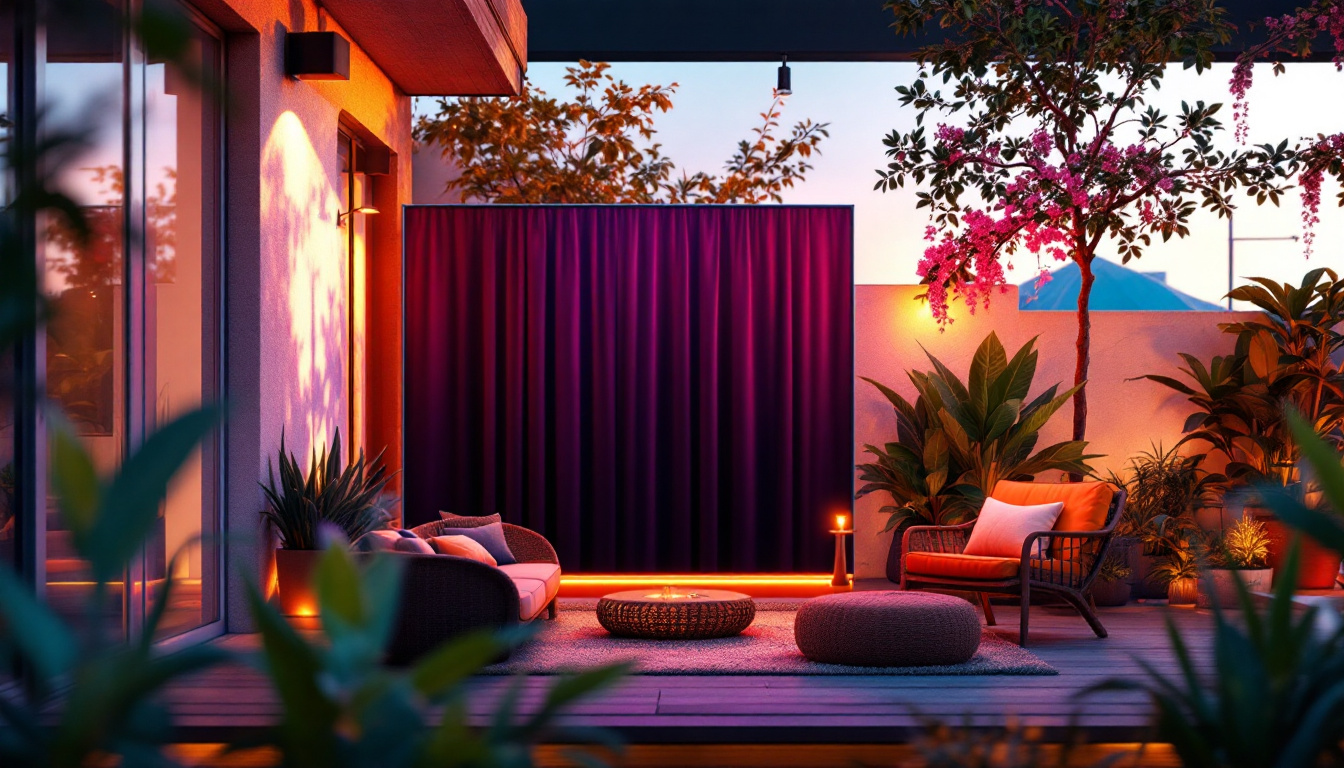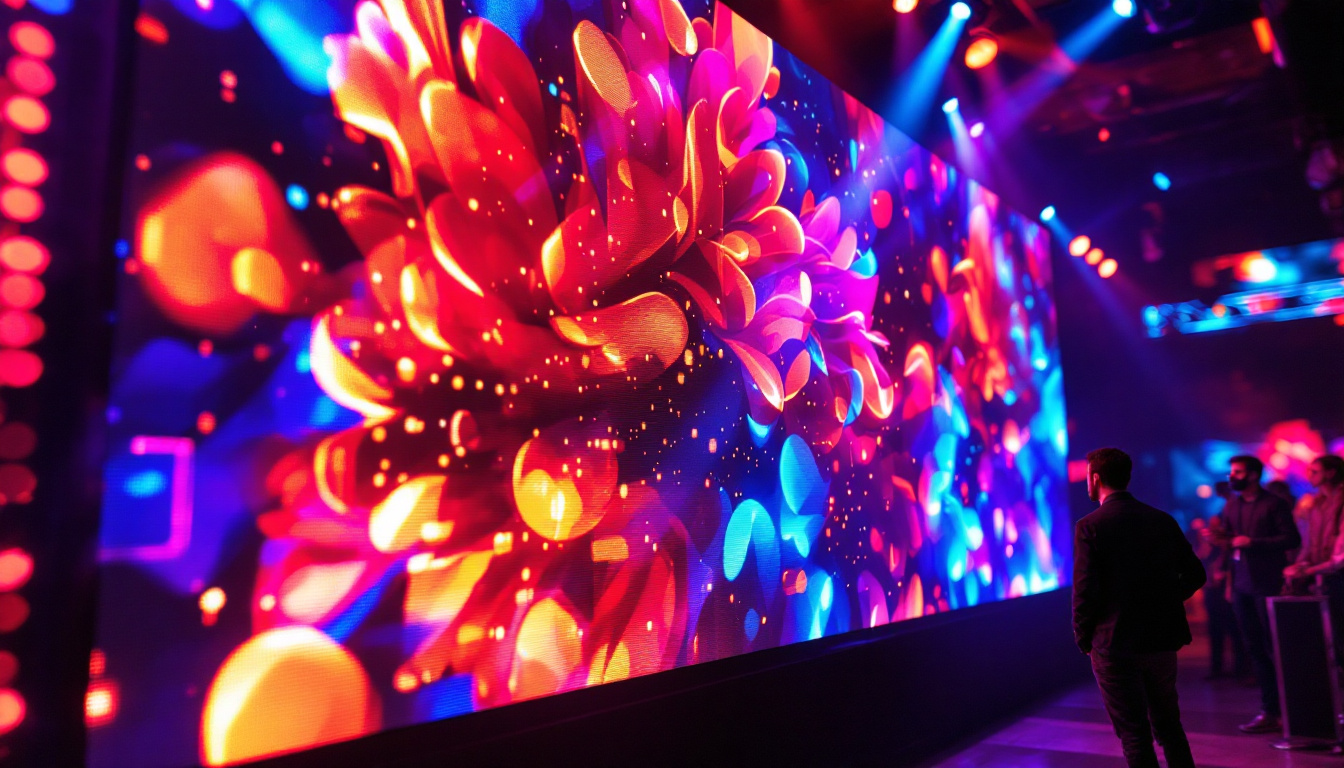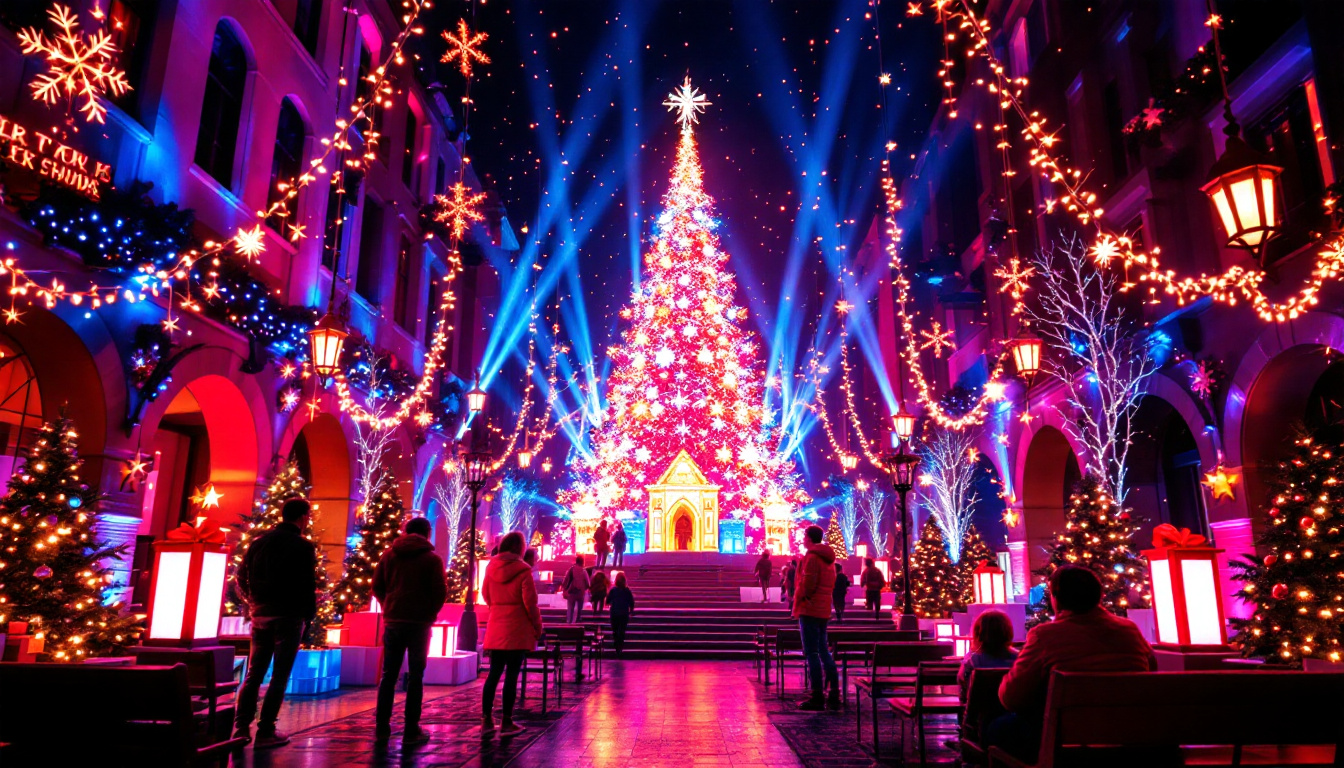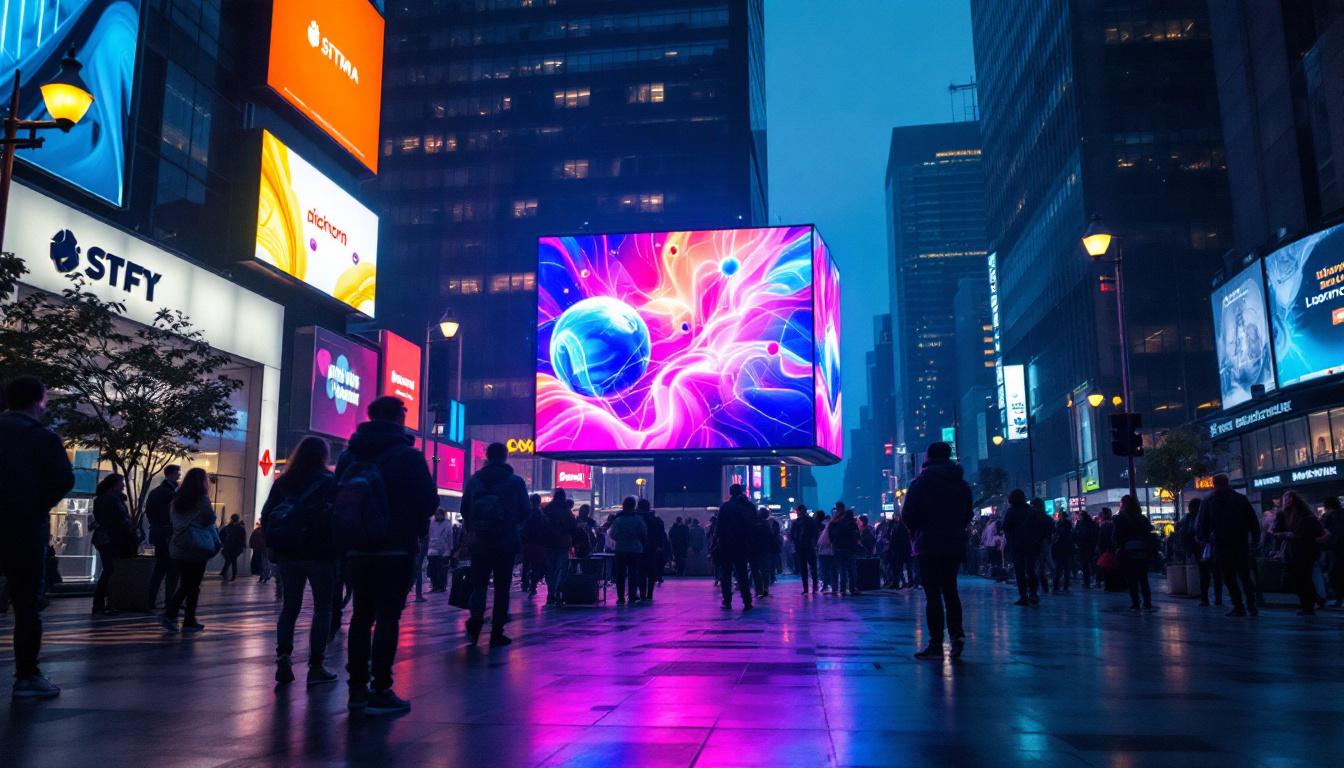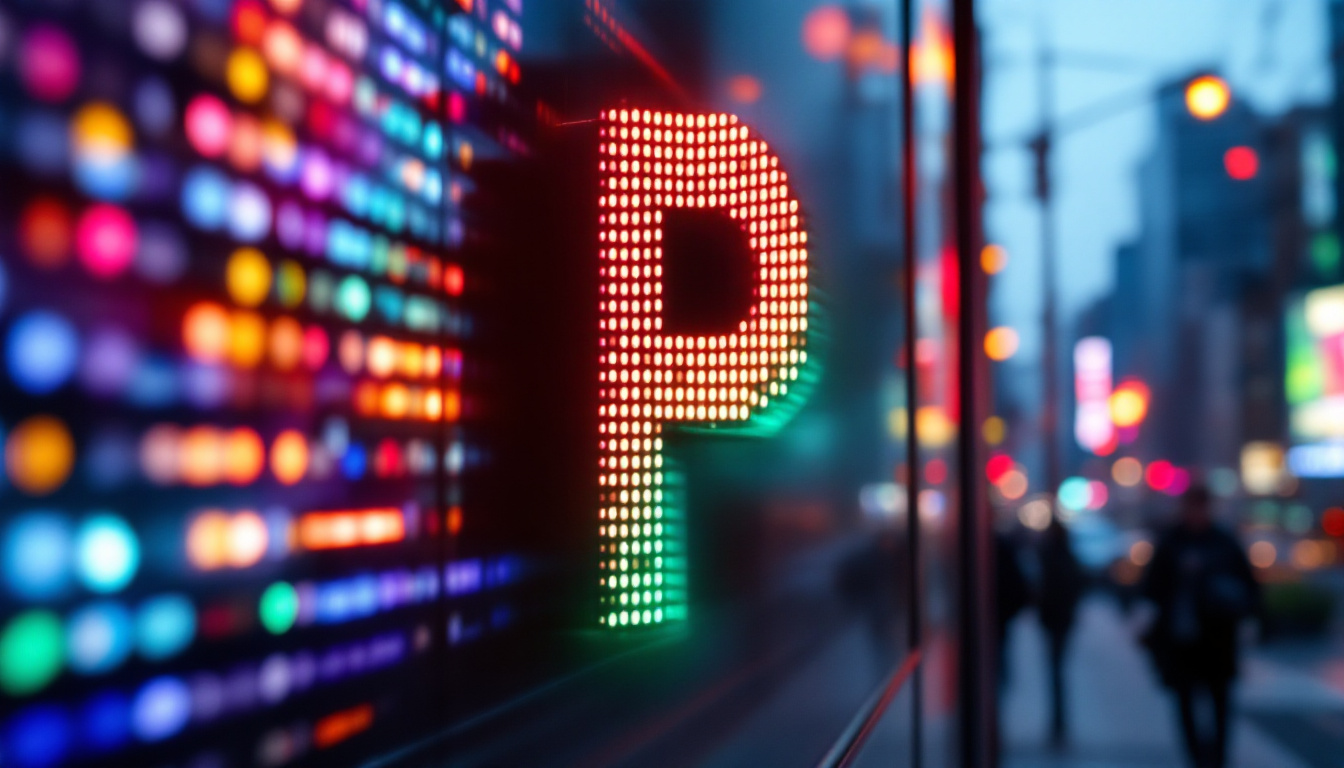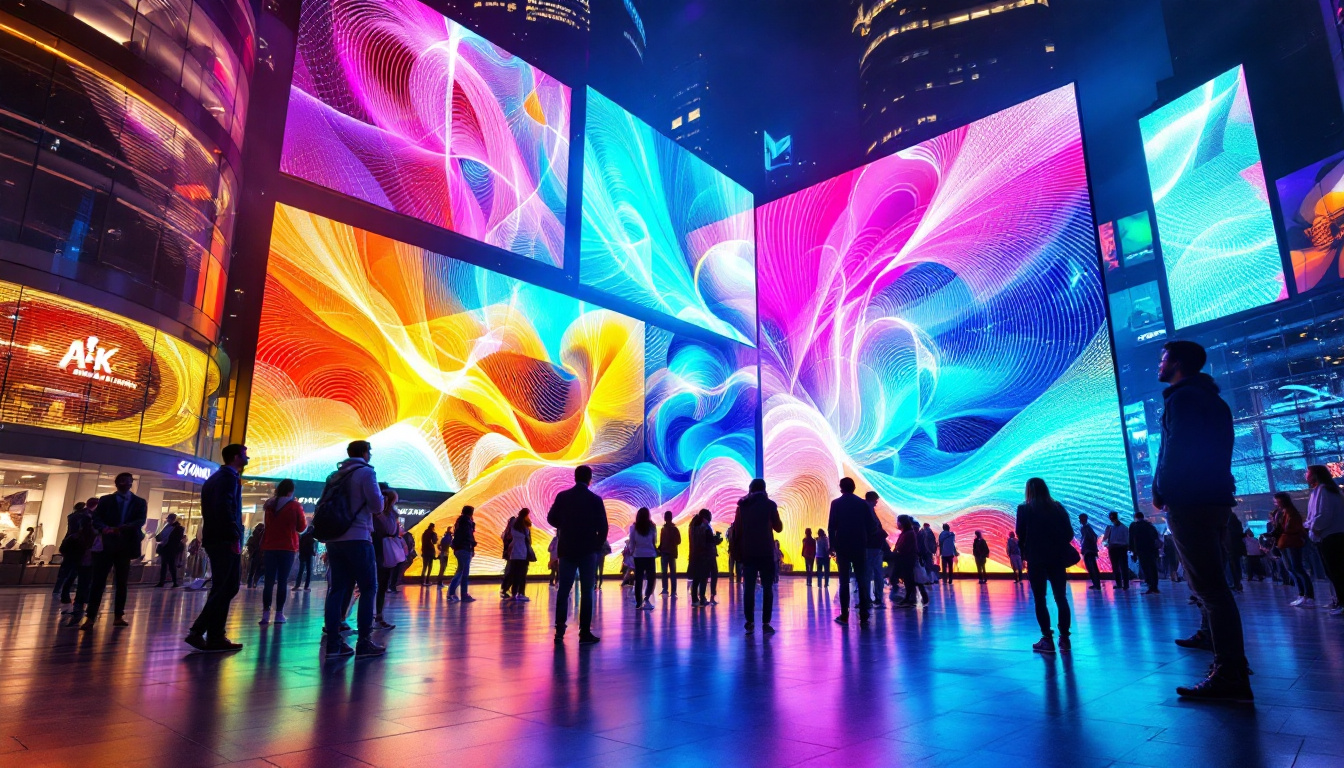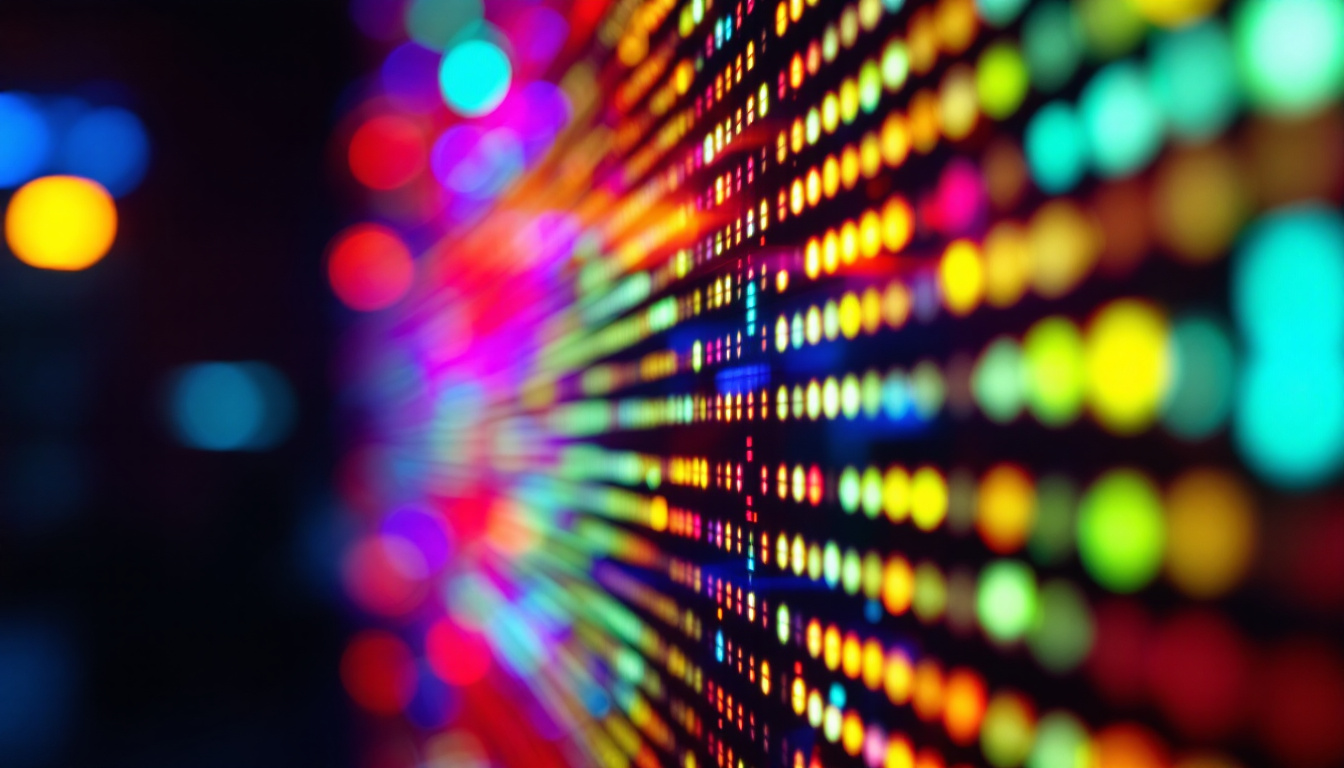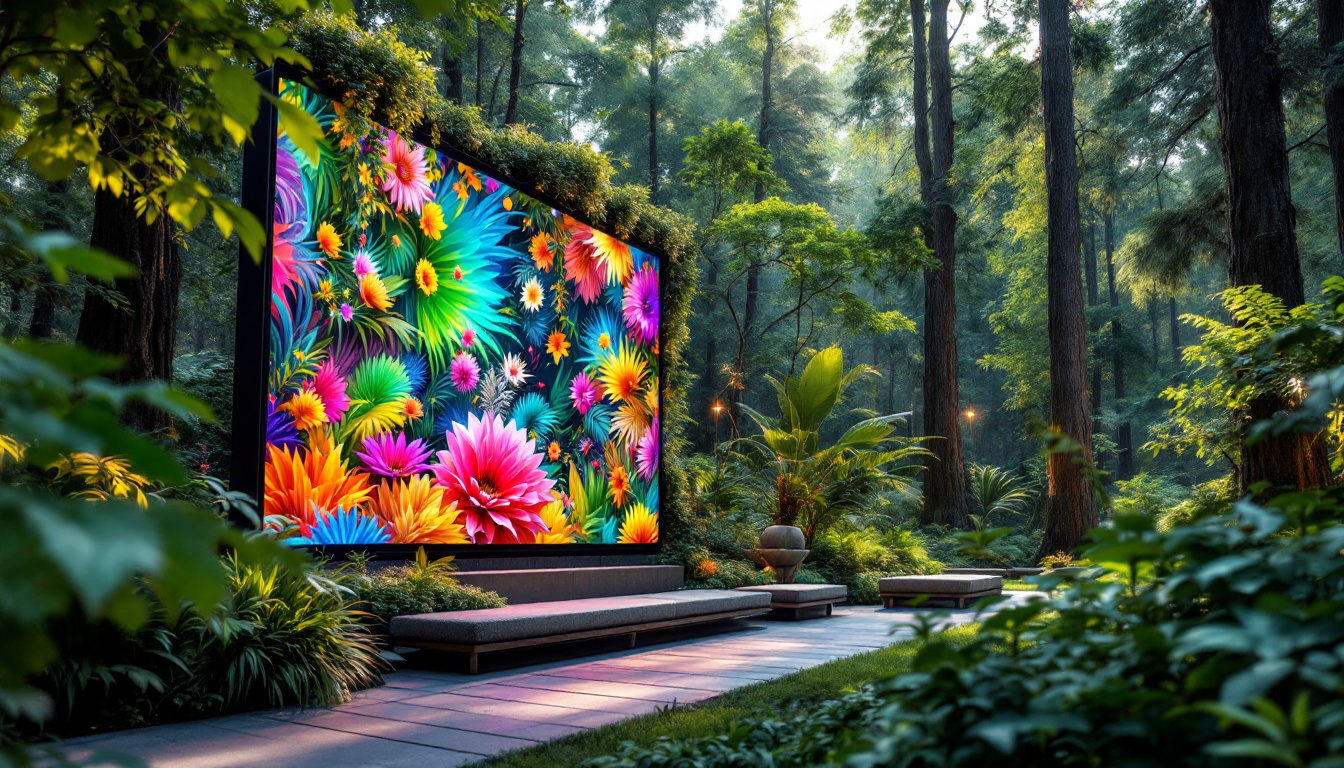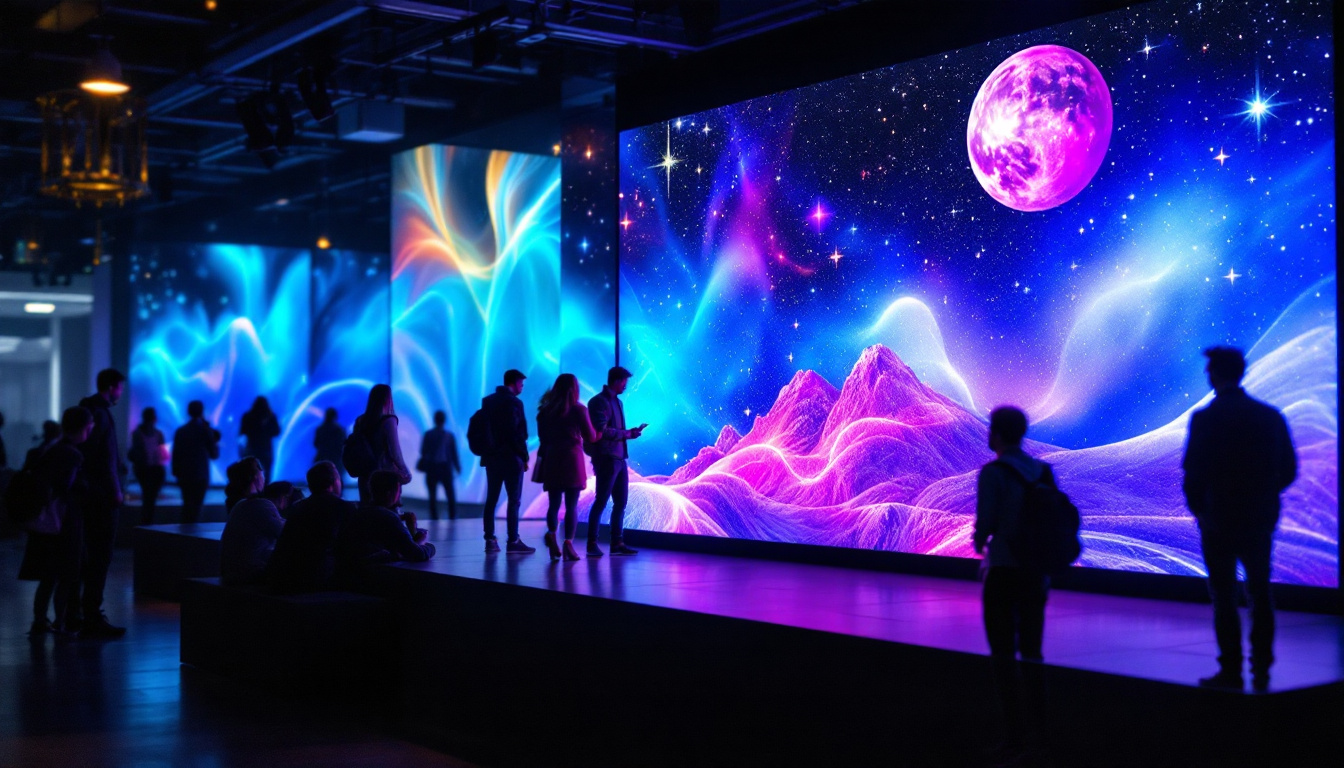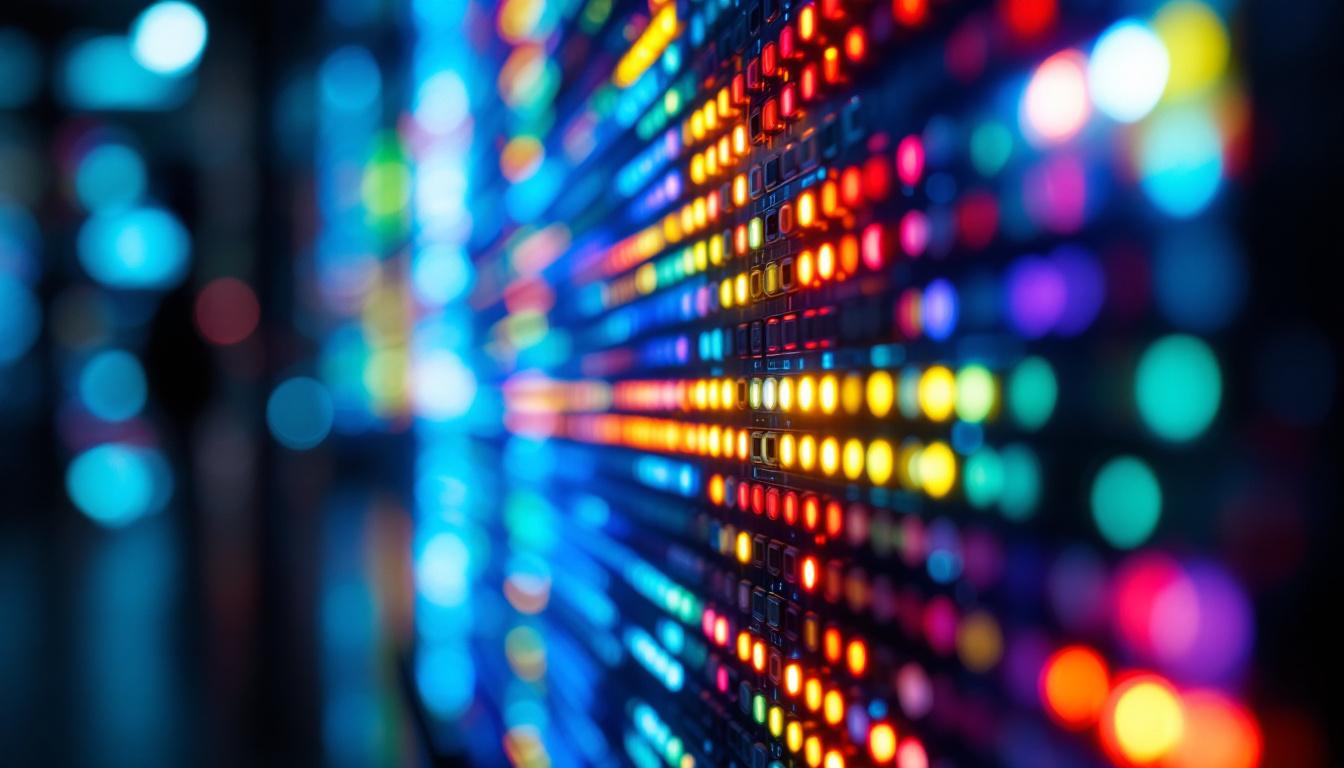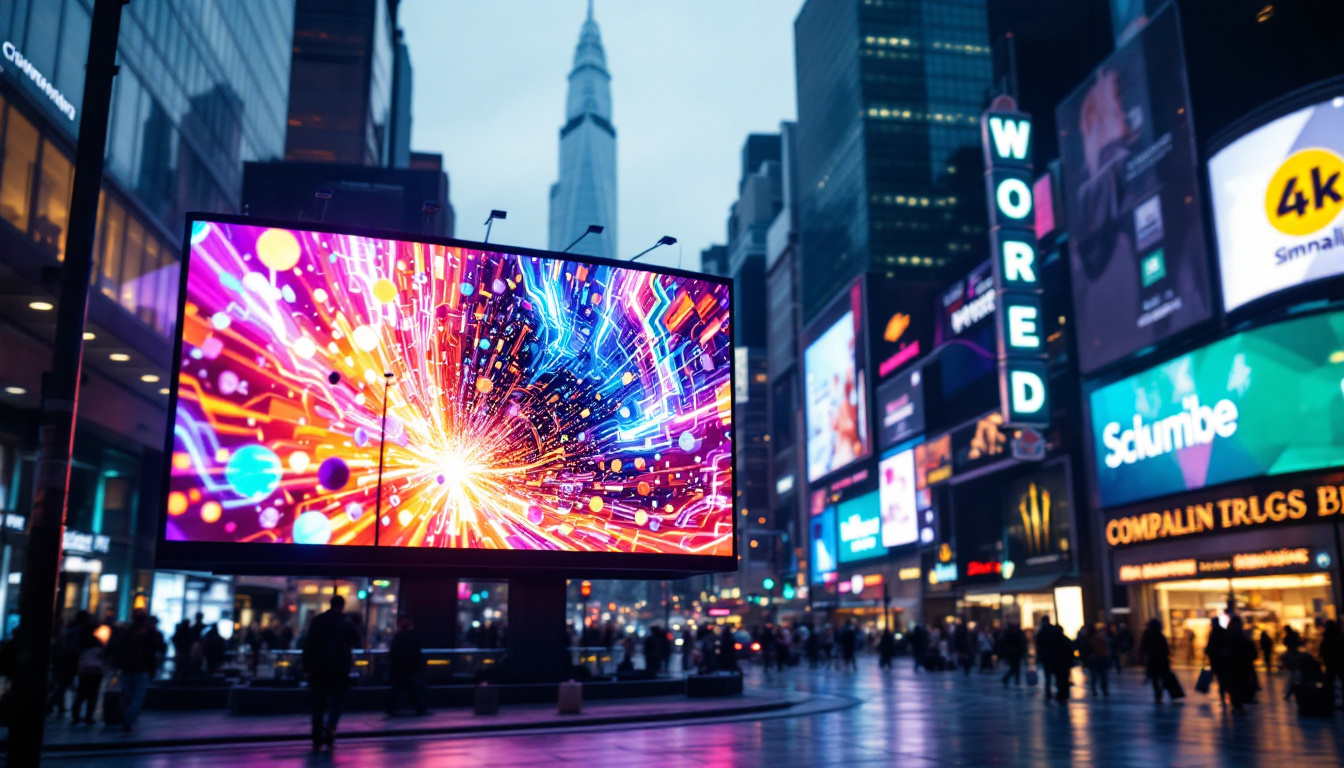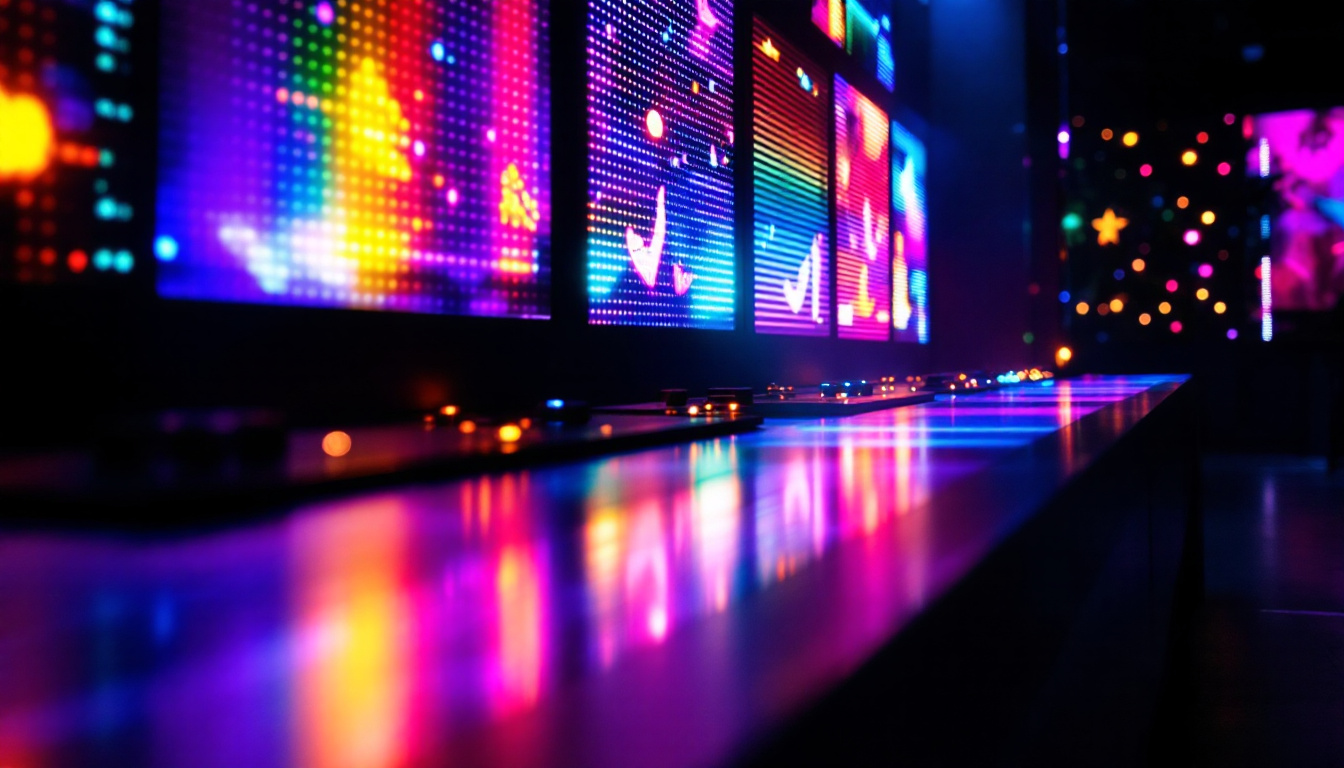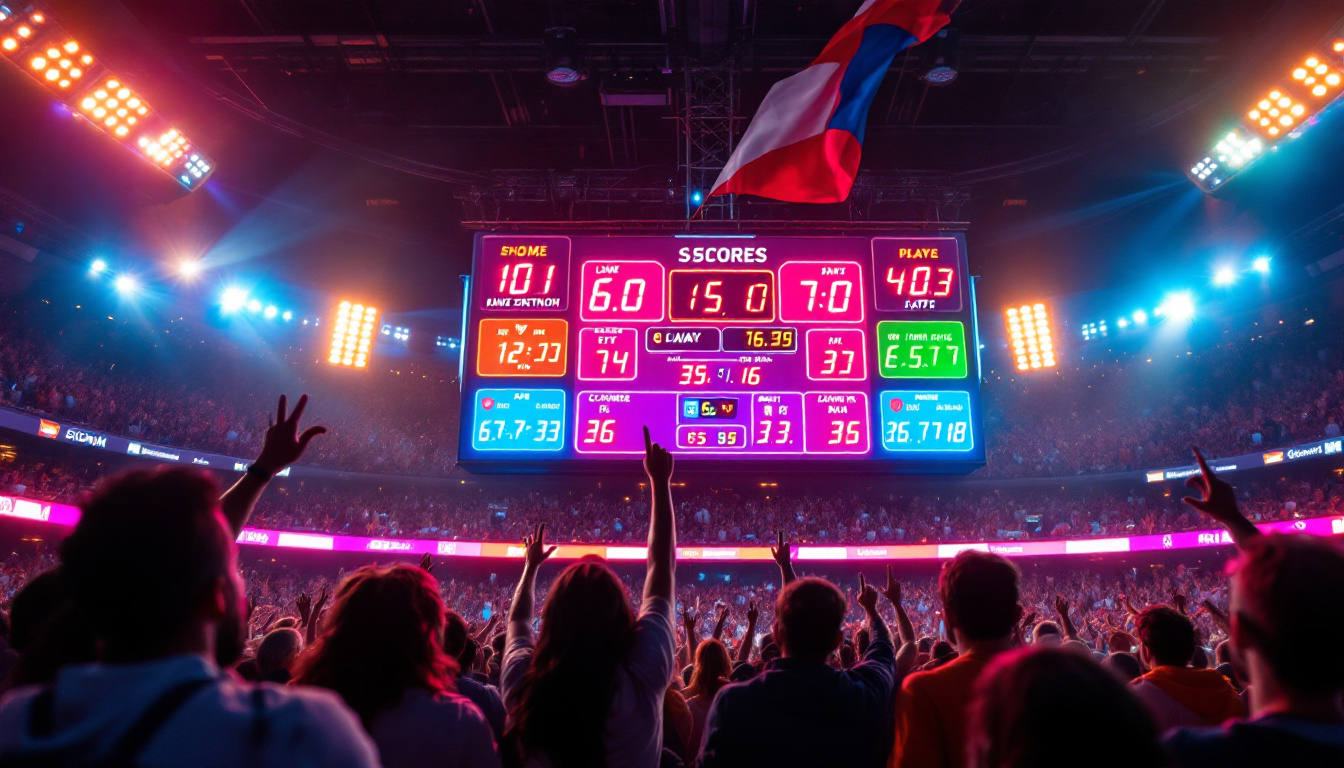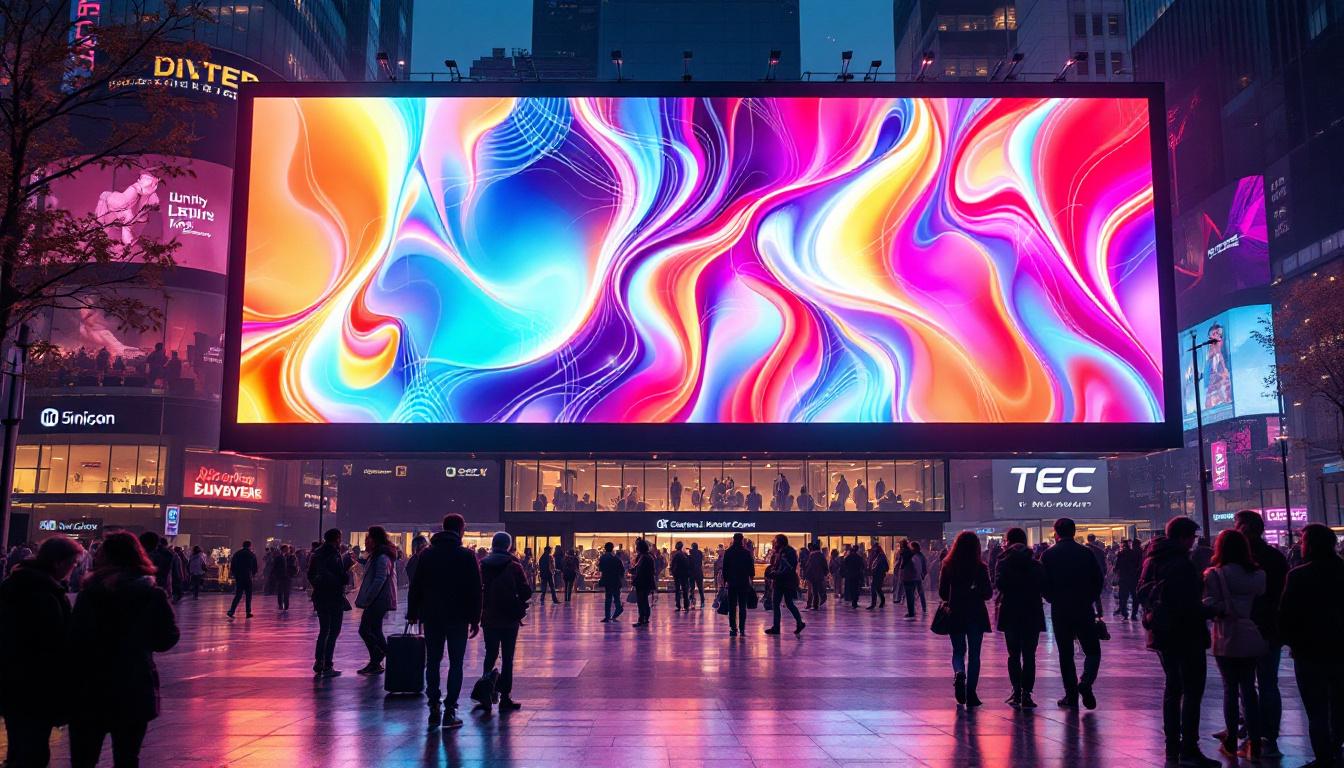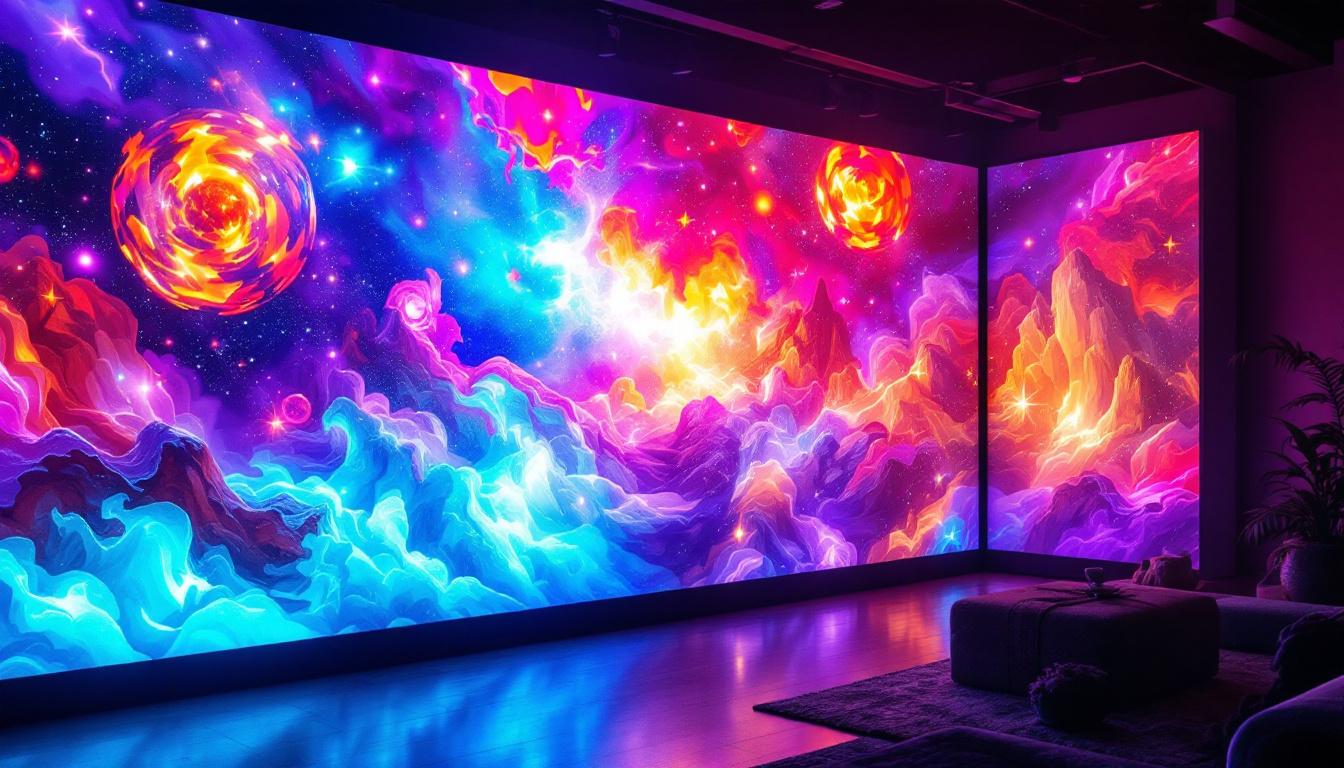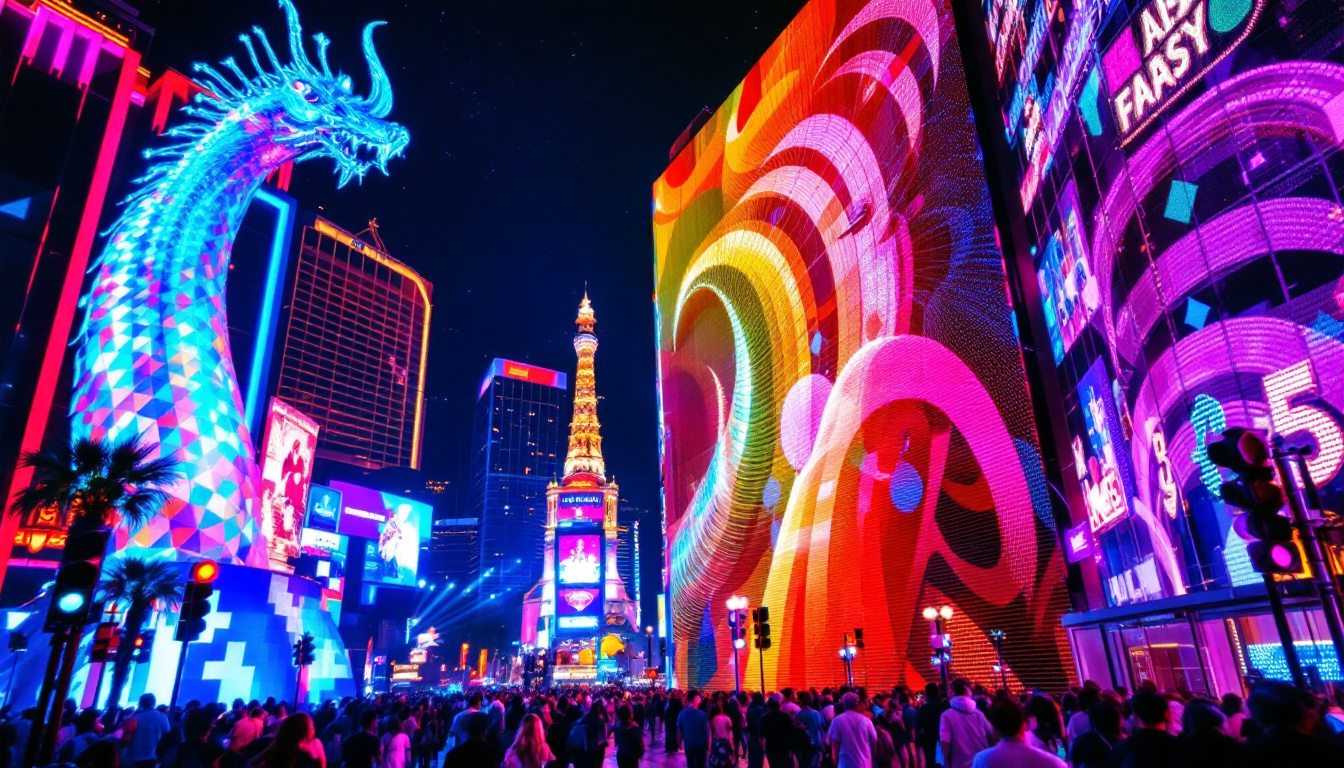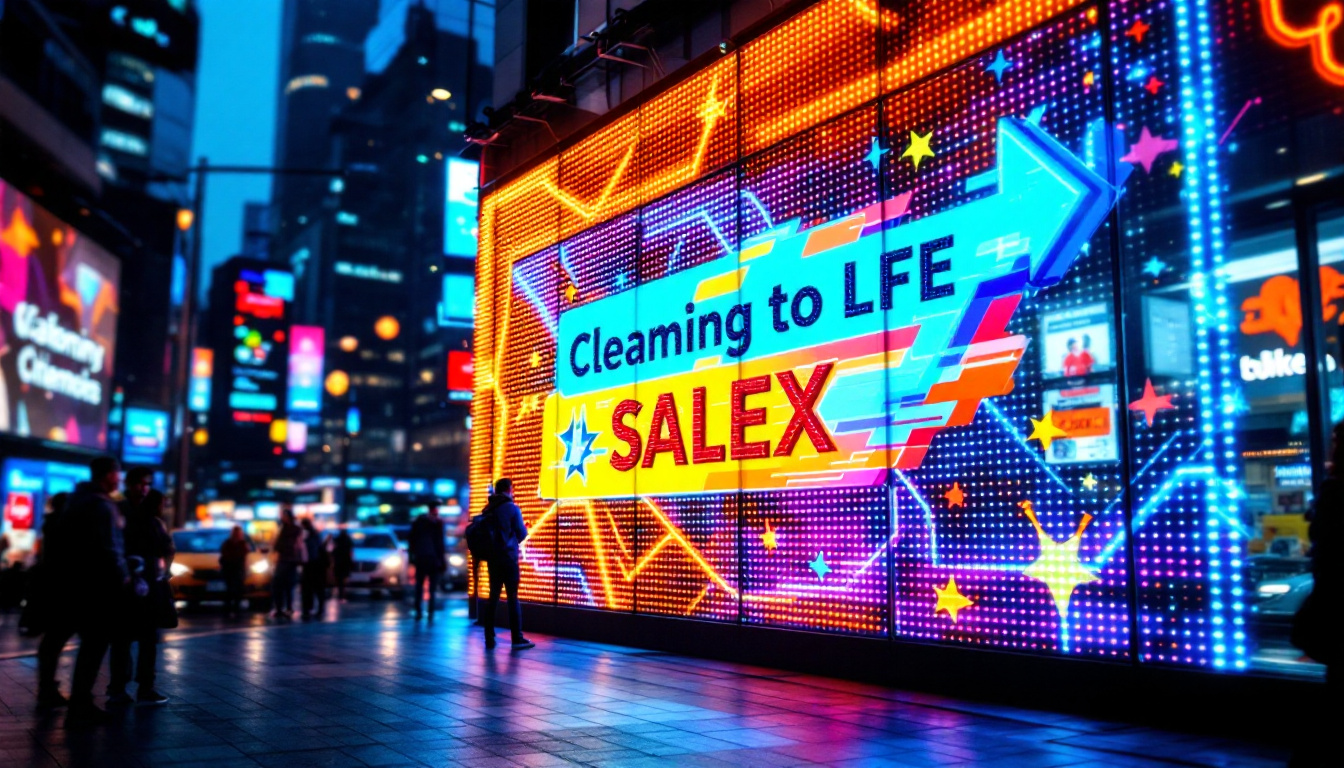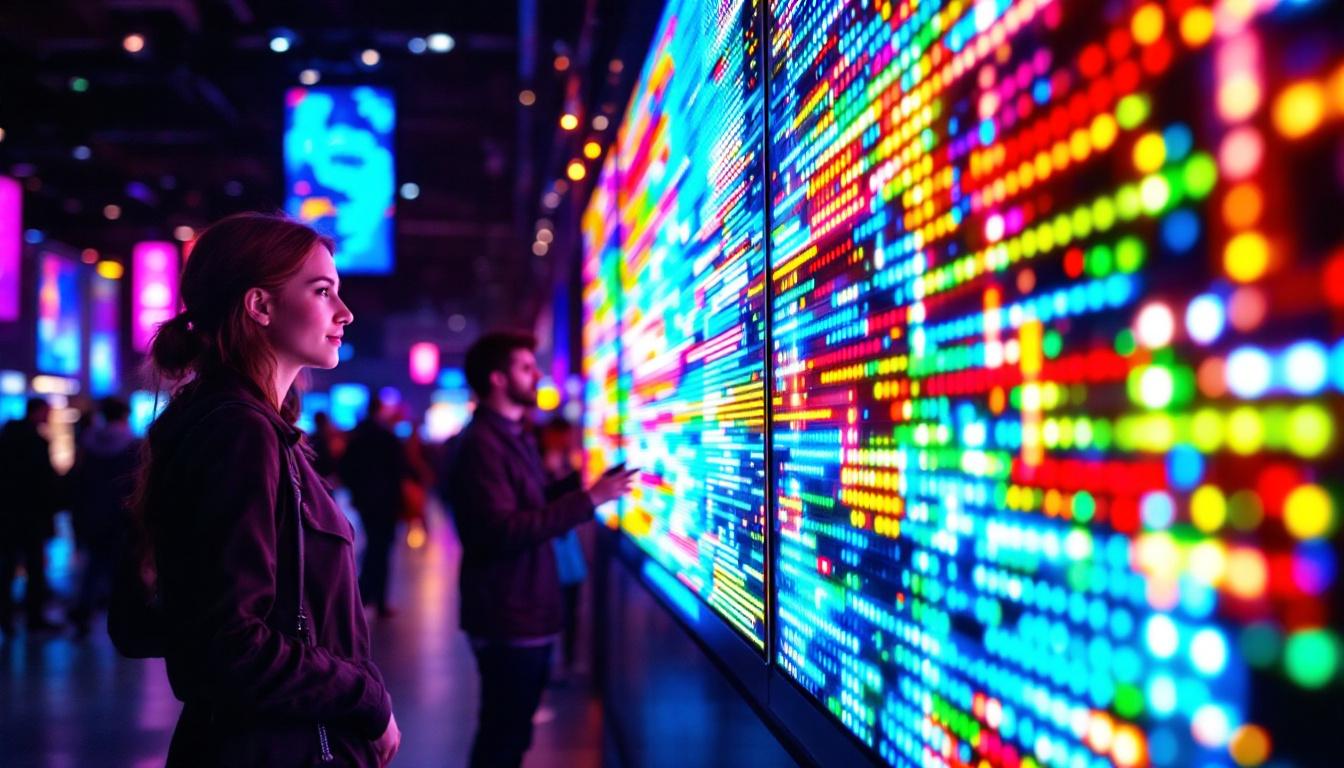In the modern world of broadcasting, LED displays have emerged as a dominant technology, transforming how information is conveyed to audiences. This article delves into the intricacies of LED displays, their benefits, and their applications in various broadcasting environments.
Understanding LED Technology
Light Emitting Diodes (LEDs) are semiconductor devices that emit light when an electric current passes through them. This technology has revolutionized display systems, providing vibrant colors, high brightness, and energy efficiency. Unlike traditional display technologies, LEDs offer a more compact and versatile solution for various applications. Their low power consumption and long lifespan make them an attractive option for both consumers and businesses, leading to widespread adoption across multiple industries.
The Basics of LED Displays
LED displays consist of an array of tiny light-emitting diodes that work together to create images and videos. These displays can be categorized into two main types: direct view and backlit. Direct view LED displays are made up of individual LEDs that form the image directly, while backlit displays use LEDs to illuminate a liquid crystal display (LCD) panel. The technology behind these displays has advanced significantly, allowing for higher pixel densities and improved color reproduction, which enhances the overall viewing experience.
Direct view LED displays are particularly popular in broadcasting due to their ability to produce bright, high-contrast images that can be viewed from various angles. This characteristic is essential for outdoor applications, where sunlight can wash out traditional displays. Furthermore, the modular design of many direct view LED systems allows for easy scalability, enabling large video walls to be constructed for events or permanent installations. This flexibility has made them a preferred choice for concerts, trade shows, and public displays, where dynamic content is key to engaging audiences.
Types of LED Displays
LED displays come in several forms, each tailored to specific applications. Common types include:
- Indoor LED Displays: These are designed for use in controlled environments, such as studios and conference rooms. They offer high resolution and color accuracy, making them ideal for presentations and broadcasts. The technology used in indoor displays often prioritizes finer pixel pitches, allowing for closer viewing distances without sacrificing image quality.
- Outdoor LED Displays: Built to withstand the elements, outdoor displays are brighter and more durable. They are commonly used for advertising billboards, sports arenas, and public events. These displays are engineered to resist water and dust ingress, and they often feature enhanced cooling systems to manage heat generated by prolonged use in bright conditions.
- Transparent LED Displays: These innovative displays allow light to pass through, making them suitable for retail environments where visibility is crucial. They can display advertisements without obstructing the view of products behind them. This unique feature not only enhances the aesthetic appeal of retail spaces but also enables brands to engage customers in a more interactive manner, blurring the lines between digital and physical shopping experiences.
Additionally, there are specialized LED displays such as flexible LED screens that can be bent or shaped to fit unique architectural designs, allowing for creative installations that capture attention. The integration of smart technology with LED displays is also on the rise, enabling features like real-time content updates, audience analytics, and interactive capabilities that further enhance user engagement. As the technology continues to evolve, we can expect even more innovative applications and improvements in LED display systems.
Advantages of LED Displays in Broadcasting
The adoption of LED displays in broadcasting has been driven by numerous advantages that enhance the viewer experience and improve operational efficiency.
High Brightness and Visibility
One of the most significant benefits of LED displays is their high brightness levels. This feature ensures that content remains visible even in bright sunlight, making them ideal for outdoor broadcasting. The ability to adjust brightness levels dynamically also allows for optimal viewing in various lighting conditions. This adaptability not only enhances the audience’s ability to see the content clearly but also contributes to the overall aesthetic appeal of the broadcast, as vibrant colors and sharp images can capture attention more effectively than traditional displays.
Energy Efficiency
LED technology is known for its energy efficiency. LED displays consume significantly less power compared to traditional display technologies, resulting in lower operational costs. This efficiency is particularly advantageous for broadcasters who operate large-scale displays, as it can lead to substantial savings over time. Furthermore, the reduced energy consumption aligns with growing environmental concerns, allowing broadcasters to promote sustainability while delivering high-quality content. By utilizing LED displays, companies can not only reduce their carbon footprint but also position themselves as environmentally conscious leaders in the industry.
Longevity and Durability
LED displays are built to last. With a lifespan that can exceed 100,000 hours, they require less frequent replacements than other display types. Additionally, they are resistant to shock and vibration, making them suitable for high-traffic environments such as sports arenas and concert venues. This durability means that broadcasters can rely on their LED setups for extended periods without the need for costly maintenance or replacements. Moreover, the robust nature of LED technology allows for seamless integration into various setups, from large outdoor screens to smaller indoor displays, ensuring that broadcasters can maintain a consistent quality of presentation across different platforms.
Versatility in Content Delivery
Another notable advantage of LED displays is their versatility in content delivery. These displays can easily switch between various formats, including live feeds, pre-recorded videos, graphics, and animations, allowing broadcasters to create dynamic and engaging content. This flexibility enables broadcasters to tailor their presentations to suit different events, whether it’s a live sports match, a concert, or a corporate event. Additionally, the ability to display high-definition content ensures that audiences receive a rich visual experience, which can significantly enhance viewer engagement and retention.
Improved Color Accuracy
LED displays also offer improved color accuracy compared to traditional display technologies. With the capability to produce a wider color gamut, LED technology ensures that colors are vibrant and true to life. This is particularly important in broadcasting, where accurate color representation can impact the overall message and emotional tone of the content. Whether it’s the lush greens of a sports field or the deep blues of a concert stage, LED displays can bring these colors to life, creating a more immersive experience for viewers. This heightened level of detail not only captivates audiences but also reinforces the professionalism and quality of the broadcasted content.
Applications of LED Displays in Broadcasting
LED displays have found applications in various broadcasting scenarios, each leveraging the technology’s unique features to enhance communication and engagement.
Live Event Broadcasting
During live events, such as concerts, sports games, and festivals, LED displays serve as the primary medium for conveying information to audiences. They can showcase real-time statistics, advertisements, and live feeds, ensuring that attendees remain engaged throughout the event.
Moreover, the flexibility of LED displays allows for dynamic content changes, enabling broadcasters to adapt to the flow of the event. This adaptability is crucial for maintaining audience interest and delivering an immersive experience.
Studio Broadcasting
In studio environments, LED displays are utilized for backdrops, graphics, and information displays. Their high resolution and vibrant colors enhance the visual appeal of broadcasts, making them more engaging for viewers at home.
Additionally, LED displays can be integrated with other technologies, such as augmented reality, to create interactive experiences. This integration allows broadcasters to present information in innovative ways, further captivating their audience.
Advertising and Marketing
LED displays are extensively used for advertising purposes in broadcasting. They provide a platform for dynamic advertisements that can be updated in real-time. This capability is particularly beneficial for advertisers looking to promote time-sensitive offers or events.
Furthermore, the ability to target specific demographics through location-based advertising enhances the effectiveness of marketing campaigns. Broadcasters can tailor content to suit the audience’s preferences, maximizing engagement and conversion rates.
Challenges and Considerations
Despite the numerous advantages of LED displays, there are challenges and considerations that broadcasters must address when implementing this technology.
Initial Investment Costs
While LED displays offer long-term savings through energy efficiency and longevity, the initial investment can be significant. High-quality LED displays, especially those designed for outdoor use, can come with a hefty price tag. Broadcasters must weigh the upfront costs against the potential benefits to determine if the investment aligns with their budget and goals.
Maintenance and Technical Expertise
Maintaining LED displays requires technical expertise, as issues can arise from various factors, including environmental conditions and hardware malfunctions. Broadcasters need to ensure they have the necessary support and resources to address maintenance needs promptly. Regular inspections and preventative maintenance can help mitigate potential issues and extend the lifespan of the displays.
Content Management
Effective content management is crucial for maximizing the impact of LED displays. Broadcasters must develop a strategy for creating, scheduling, and updating content to keep audiences engaged. This process can be resource-intensive and may require specialized software and training for staff members.
The Future of LED Displays in Broadcasting
The future of LED displays in broadcasting looks promising, with ongoing advancements in technology and design. Innovations are expected to enhance the capabilities of LED displays, making them even more versatile and effective for broadcasters.
Emerging Technologies
As technology continues to evolve, new developments in LED displays are on the horizon. For instance, microLED technology is gaining traction, offering even higher resolutions and improved color accuracy. This technology could redefine the standards for display quality in broadcasting, providing a more immersive viewing experience.
Additionally, advancements in artificial intelligence and machine learning may enable broadcasters to create more personalized content for their audiences. By analyzing viewer preferences and behaviors, broadcasters can tailor their messaging to enhance engagement and retention.
Sustainability Initiatives
With an increasing focus on sustainability, the broadcasting industry is likely to adopt more eco-friendly practices. LED technology is inherently more energy-efficient than traditional displays, but future developments may further reduce the environmental impact of manufacturing and disposal processes. Broadcasters may prioritize sustainable sourcing and recycling programs to align with consumer expectations and regulatory requirements.
Conclusion
LED displays have fundamentally transformed the broadcasting landscape, offering unparalleled brightness, energy efficiency, and versatility. From live events to studio productions and advertising, these displays enhance communication and engagement with audiences. While challenges exist, the benefits of LED technology make it a valuable asset for broadcasters looking to elevate their content delivery.
As advancements continue to shape the future of LED displays, broadcasters must remain adaptable and forward-thinking. Embracing emerging technologies and sustainable practices will not only enhance the viewer experience but also ensure that broadcasting remains relevant in an ever-evolving digital landscape.
Discover LumenMatrix’s Advanced LED Display Solutions
Ready to take your broadcasting capabilities to the next level? Explore LumenMatrix’s innovative LED display technologies, designed to bring your content to life with unparalleled vibrancy and precision. Whether you’re looking to captivate audiences at live events, enhance your studio environment, or drive impactful advertising campaigns, LumenMatrix offers a comprehensive range of solutions, including Indoor and Outdoor LED Wall Displays, Vehicle LED Displays, and more. Experience the future of visual communication with our cutting-edge LED display modules. Check out LumenMatrix LED Display Solutions today and transform your broadcast screen into a dynamic canvas that resonates with viewers.

